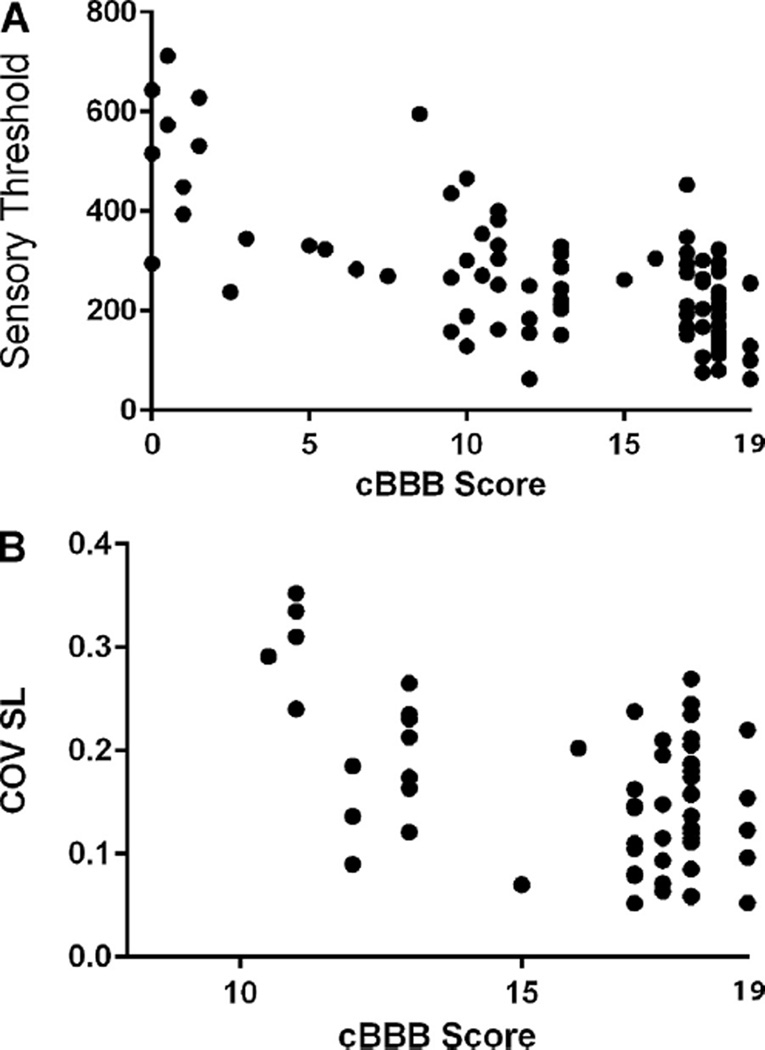Fig. 4.
cBBB scores correlate with other independent measures of recovery after SCI. Sensory threshold, as measured by an electronic von Frey anesthesiometer, is inversely correlated with cBBB score in SCI-affected dogs (r = −0.68; p < 0.0001), indicating that as acute hypoalgesia declines toward normal, locomotor status as measured by the cBBB also improves (A). For dogs who are able to ambulate unassisted (cBBB score ≥ 11), coefficient of variance of hind limb stride length (COV SL) is also inversely correlated with cBBB scores across a 30 day recovery period (r = −0.49; p ≤ 0.0001), such that SL becomes more consistent as locomotor score improves (B).

